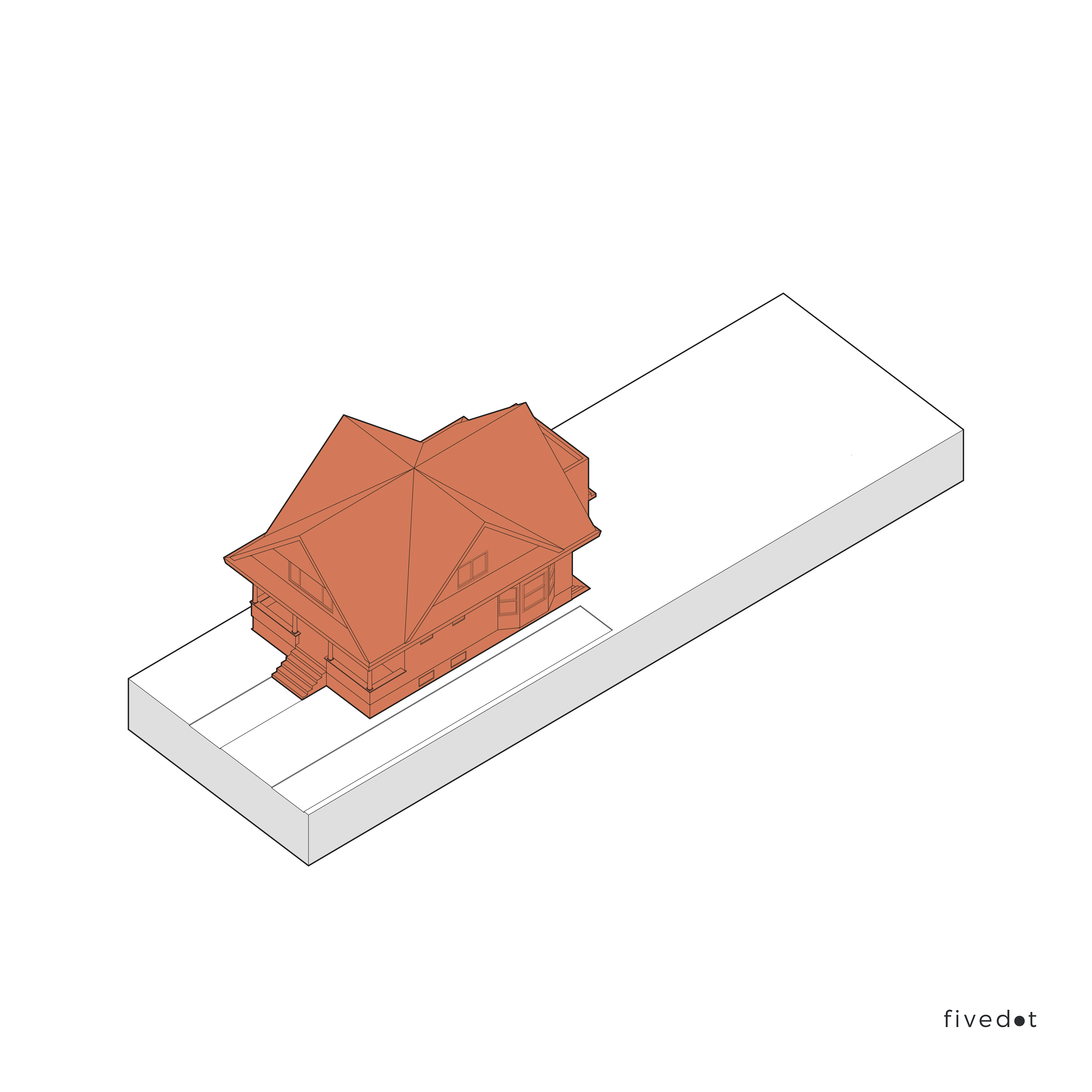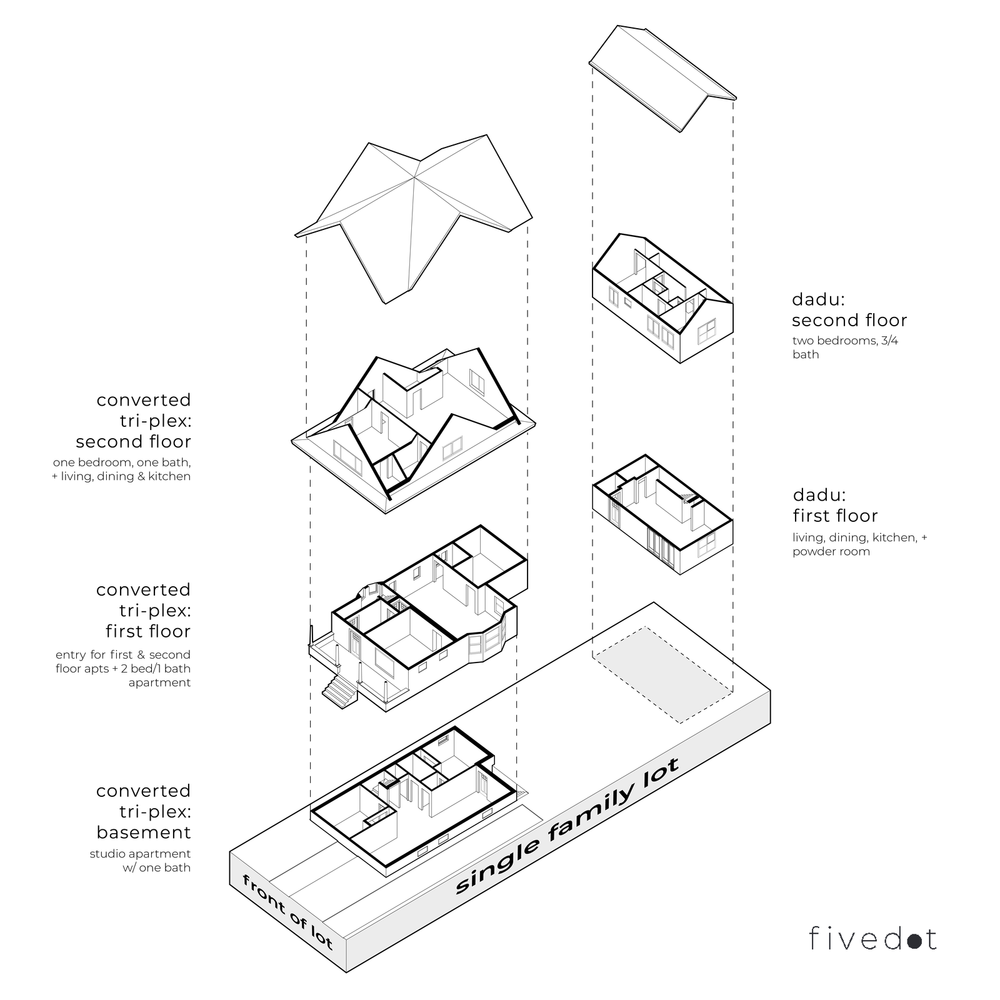The math is in: Working with existing buildings may be one of the most economically viable options for creating denser housing within Seattle’s interpretation of HB1110.
Fivedot has been following the progression of missing middle housing from advocacy to policy to code and we are excited to see the results. HB1110, passed in 2023, requires cities in Washington to allow 4-6 units on all residential lots. This effectively removes single family zoning, which is a huge step in addressing the affordability crisis that many cities are experiencing.
Seattle released an early draft of their proposed changes to the residential zoning code late last year. We, and many others, found that version to be lackluster and pushed for changes that more closely follow the state's model code. A revised draft code was just released and thankfully, many of the changes that we and others were hoping to see made their way into the draft.
The city produced a document outlining a proposal to increase housing options and meet the requirements outlined in HB1110, called “Updating Seattle’s Neighborhood Residential Zones”. We dove into this document and reviewed their suggested potential development options. Almost all of them would result in new housing that was anything but affordable. When an updated draft of this document came out very recently, we did the same analysis with the new information. We found that while the changes do allow for larger units, which is great, the sale price of most units would still have to be quite high to make them work, given high land prices and high construction costs. With the exception of areas that allow denser development near transit zones, our proforma analysis’s show that the majority of the city’s proposed options would result in units priced at $800K or above. There are proposed bonuses for affordable housing but in order to qualify, "At least half of units must be price- and income-restricted so they are affordable to households making 60% of area median income (AMI) for rental units or 80% of AMI for ownership units". This would likely make the development of those projects infeasible without subsidies.
All of the options shown by the City assumed brand new development. In Seattle, that means the demolition of an existing home given that there are almost no unbuilt lots within the city. This may make sense for a property with a small house on it, but we were interested in seeing if there was a way to retain some of the city's larger homes while also expanding housing options. We explored what might happen if you took an existing, older single-family home and converted it to three units and added a DADU; something currently not allowed, but that will be allowed under the proposed code changes. Our firm recently worked on a basement addition of a turn-of-the-century home and so we have used that as our model for this exploration.

Let’s say the existing house is a 3 bedroom, 1.5 bath home with steep cross gables and a generous front porch on a 5000sqft lot. Using typologies commonly found on the East Coast as precedents, we divided the existing house into three units with an entry vestibule at the front of the house for two of the units and rear entry for the basement unit. The upper floor becomes a one-bedroom unit while the main floor and basement each become two-bedroom units. A newly constructed two-bedroom DADU is placed in the rear yard to bring the unit count to four and changing the property from a 3 bedroom property that houses one family to a seven bedroom property that can house four families.
See below an exploded axonometric drawing illustrating each floor of the existing house and the DADU.

In this proposal, the exterior of the existing house remains largely unchanged, and the only new construction takes place at the rear of the site and under the existing house. Based on our recent experience with both renovations and the development of DADU’s, as well as conversations with other architects and builders, we believe that the resulting units could be relatively affordable for Seattle- ranging from $450,000 to $700,000, and create more housing with little change to the fabric of a neighborhood.
While we love a shiny new building, sometimes it's best to work with what you already have.
